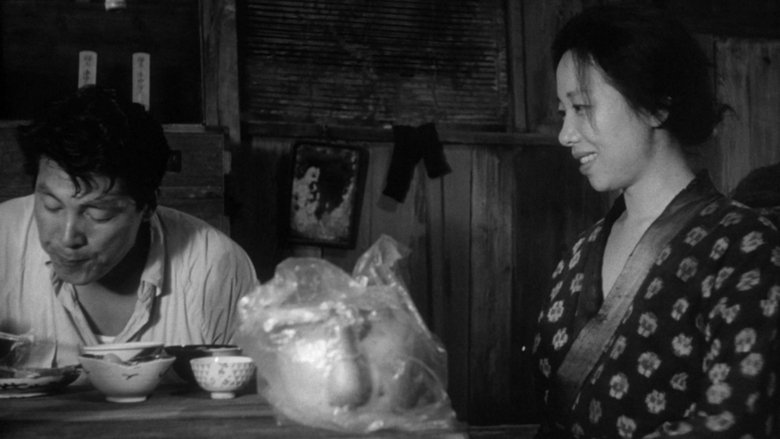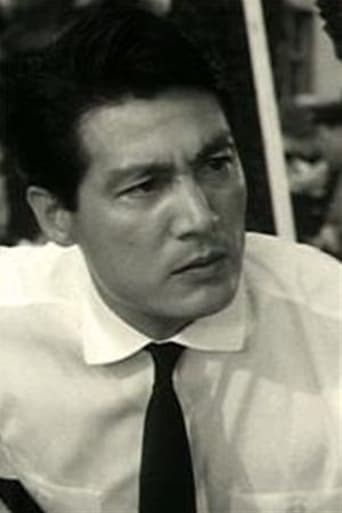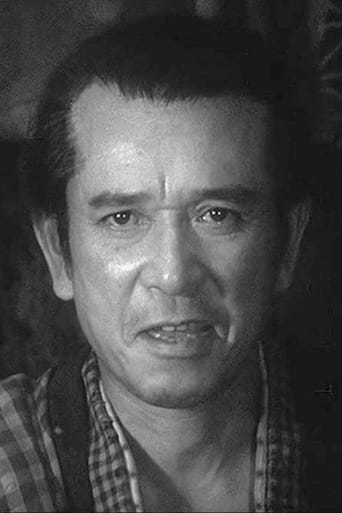Woman in the Dunes (1964)
A vacationing entomologist suffers extreme physical and psychological trauma after being taken captive by the residents of a poor seaside village and made to live with a woman whose life task is shoveling sand for them.
Watch Trailer
Cast


Similar titles
Reviews
Instant Favorite.
Don't listen to the negative reviews
The movie's not perfect, but it sticks the landing of its message. It was engaging - thrilling at times - and I personally thought it was a great time.
It’s fine. It's literally the definition of a fine movie. You’ve seen it before, you know every beat and outcome before the characters even do. Only question is how much escapism you’re looking for.
How far can you go, away from society, just to pursue your passion? "Woman in the Dunes" touches this very subject by addressing social escapism. The co-habitation of the couple contrasts a man of his journey with a woman with her home. The theme is even expanded with one longing for freedom while the other clings to stability. Isn't that the common intersexual and mental differences between a husband and a wife or partners? When it comes characterization, this thriller-adventure brings about a fresh plot in that period, with no specific antagonist. One could interpret it as self, the other protagonist or even their collectivity. Still, lacking introduction of the heroes' background might puzzle some audience, although relieved with revealing dialog here and there. And I'm not sure if one could "appreciate" Hiroshi Teshigahara's style when focusing on trivial physical details of some characters. In short, the performance of both Eiji Okada and Kyôko Kishida makes the film relatable with some artistic editing techniques and metaphors in detail. I believe, therefore, in its possibility to remake in color to pay homage to this legendary Japanese director!
Living in a calm, peaceful place, doing an easy job with enough earning, a beautiful woman who love you and can cook really tasty foods; it's actually what Niki want. A middle-aged entomologist who is sick of city life and came all the way to a village next to the sea to collect insects. Maybe he can be relax from his tiring life in Tokyo. But this house is not as it looks. It's next to the sea but he can't even see the sea but he can just feel the sands that every time drops on his body. When they took his freedom, he can't enjoy anything. Even if it's something really enjoyable. They do a really easy work and earn enough for that. But are they shoveling sand to live or living to shovel sand??? Human without freedom is less than animal. When the villager offer him to play with her forced "wife" in exchange of seeing sea, he want to take out his wife's cloth to have a sex with her in front of everyone. In that scene, he is not human anymore. He can't be human anymore. s 'Woman in the Dunes' is not really about a woman in a dunes but about an adventurer man who trapped in a village. She is not even can't decide anything. It's village committee who make decision for her life. This film is a superb classic Japanese film adaptation of a fascinating novel by Kobo Abe. Kafka influence is visible in entire film.
Having watched the film and read the reviews that focused on the intended Metaphor, I still could not but feel annoyed at how he gave up trying to escape and accepted his fate. I cannot but compare what I might have done in the same predicament as the one he found himself in. I would have totally focused on escaping until I did escape by getting to the Beach and following the Shoreline Then I would return with a Back Up Crew and lay my Vengeance on those Kidnappers for holding me Hostage to teach them that there is a Price to Pay for Wrong doing. There is a Zen thing going on which the Entomologist guy embraced in the end but that isn't My Culture or Mind Set.
Woman in the dunes is a great step in Japanese cinematography because Teshigahara, the movie's director, was the first Japanese director to be nominated for an Oscar - and it is truly amazing that, back in 1964, the members of the Academy of Motion Picture Arts and Sciences were able to realize the greatness of this movie.It all starts with the entomologist Niki Jumpei (Eiji Okada), alone, walking in the desert, looking for insects. No dialogue, just beautiful cinematography and games of light and shadow. He is invited by the local villagers to spend the night in the home of a widow (Kyôko Kishida), at the bottom of a sandpit, since he has missed the last bus to the city. This does not upset him, he's interested in their way of life, therefore he accepts. But the next morning he discovers the villagers trapped him - just like he traps his beloved insects - and expect him to live with the woman and help her collect the sand daily, receiving food and water in return. So he tries to escape this claustrophobic environment.Where should I begin? This movie has "masterpiece" written all over it. The two main (and almost only) characters are at the same time opposite and similar - opposite in their reaction to the imprisonment, similar in their loneliness and pointlessness of lives that they cherish nonetheless. Okada and Kishida put up amazing performances which make you forget they're just acting. But perhaps the true protagonist is the sand: the dangerous, devastating force that brings purpose to those who have learned to handle and make good use of it. A lot of scenes in the movie show it moving, changing, and always remaining the same, and they are never out of place. It dictates the lives of the people, and one is forced to love it in a perverted, Stockholm syndrome-sque kind of way, just like the widow does even after the sand has killed her husband and daughter. To make the movie fit its gloomy story even better, it was filmed in natural light; also, a lot of important things happen at night (for example, an attempt to escape) and even though you can hardly see anything, you know exactly what's going on. This creepy atmosphere is perfected by what's probably one of the best soundtracks of all time (composed by Toru Takemitsu), since it suits the picture incredibly well, making you feel uncomfortable and scared from the first minutes. And, as a conclusion, there is a sentence, said by the entomologist towards the end of the movie, which, in my opinion, sums up its message: We're pigs anyway. Simple yet powerful, just like everything else in Woman in the dunes.Rating: 9/10 Read more at http://passpopcorn.wordpress.com/

















